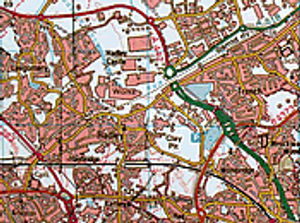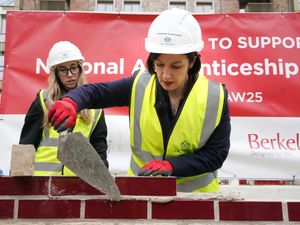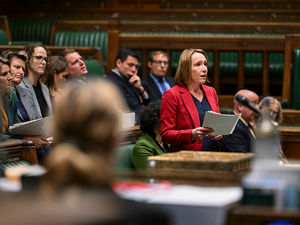Maps contrast past and present
Dramatic changes which have transformed the Shropshire landscape and county towns over almost 200 years are brought home in stark fashion in a new "Past & Present" compilation of maps.

 Dramatic changes which have transformed the Shropshire landscape and county towns over almost 200 years are brought home in stark fashion in a new "Past & Present" compilation of maps.
Dramatic changes which have transformed the Shropshire landscape and county towns over almost 200 years are brought home in stark fashion in a new "Past & Present" compilation of maps.
The compilation takes snapshots in time from four dates, from 1833 to the present. It is produced by Cassini Publishing, which reproduces Ordnance Survey maps covering what is these days the Telford area.
Take a look at larger versions of the maps above
There was no such place as Telford until 1968. The earliest map is from 1833, and then its follows through 1902, 1921 and the present day.
Areas covered by the maps include places in modern-day Telford like Wellington, Oakengates, and Ironbridge, but they also go as far south as Much Wenlock, north to Longdon-on-Tern, west as far as Uppington, and east to Shifnal.
As an example, we have zoomed in on just one section, featuring the Hadley and Ketley areas, to look at some of the changes which have taken place since 1833.
 The first thing which hits you when comparing the 1833 map with that of today is that while in 1833 these parts were very largely rural, with huge swathes of open land, today the same area is almost entirely built up with roads, housing and industry.
The first thing which hits you when comparing the 1833 map with that of today is that while in 1833 these parts were very largely rural, with huge swathes of open land, today the same area is almost entirely built up with roads, housing and industry.
And with the Government outlining proposals for hundreds of thousands of new homes across the country, will there be any space left in, say, 100 years time?
Features of particular interest on the earliest map from 1833 are Leegomery mill, marked in the upper left corner, and the inclined plane, close to "Hadley Lodge". There are signs of scattered industry, with Wombridge Furnaces on the right, and "White Brickworks" near the bottom. Mining is evident in the Ketley Bank area, bottom right, with several places marked "coalpit".
 In the centre is "New Hadley". Watling Street runs across the map. Two other forms of transport are prominent, with several railway lines marked, as well as the Shrewsbury Canal, which is in the upper part, cutting through countryside near Hadley Park.
In the centre is "New Hadley". Watling Street runs across the map. Two other forms of transport are prominent, with several railway lines marked, as well as the Shrewsbury Canal, which is in the upper part, cutting through countryside near Hadley Park.
By the 1902 map Oakengates, which gets a barely visible mention on the 1833 map (where it appears as "Oaken Gates"), had become a place of significant size.
Of particular note is the Castle Iron Works at Hadley, which had grown up in the interim and was one of the most significant employers in the area, driving the expansion of Hadley where new workers' homes were needed.
 The 1921 map marks it as the Castle Car Works. By then it was the premises of Joseph Sankey & Sons, a Bilston firm which bought it in November 1910 - and has been there ever since. Generally this map, only 19 years after the previous one, shows no major changes, but it is of course different to the present day map.
The 1921 map marks it as the Castle Car Works. By then it was the premises of Joseph Sankey & Sons, a Bilston firm which bought it in November 1910 - and has been there ever since. Generally this map, only 19 years after the previous one, shows no major changes, but it is of course different to the present day map.
The Hadley Castle Works has become a vast industrial enterprise, and Leegomery area has been swallowed up by housing. The fields of Hortonwood have been developed for industry.
The area on the map at Ketley which is shown as being undeveloped is disappearing even now, under the massive Telford Millennium Community housing scheme. And look at the transport system. Major new roads have been created, carving their way across the landscape.
Only remnants are marked of the canal which once passed through Trench and Hadley. And the railway line which passed through these areas is marked as "dismantled", although this is in fact out of date, as this particular line is a rare instance of a railway coming back from the dead.
It is being revived as part of the plans to create a major rail freight depot at Donnington.
The Cassini Telford Past & Present Map is 1:50,000 scale and costs £7.99.
Hadley 1833: The area was a largely rural landscape but the new-fangled railways are already making an impact.
Hadley 1902: The Castle Iron Works, which can be seen to the middle left of the map, were a principle local employer during this time.
Hadley 1921: With a major world war in between, there had been no dramatic changes over the same view 19 years previously.
Hadley 2008: What a contrast. The present day Ordnance Survey map shows how almost all the local open space has been swallowed up - a process which is continuing remorselessly.




